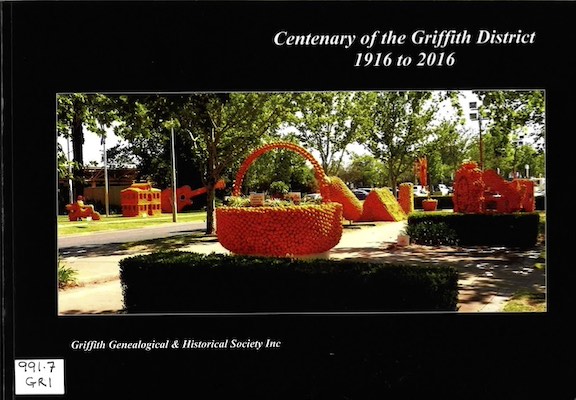Written by Christine Gavin (President, Griffith Genealogical and Historical Society)
There was an end of an era when the Griffith Genealogical and Historical Society closed its doors at the end of December 2023 after 42 years. Over time, it became more and more difficult to get members to run the Society due to the ages and medical issues of the active members, and our membership was dwindling.
The majority of our assets and resources have been donated to the Griffith City Library. Many photographs went to the Griffith Pioneer Park Museum, and anything to do with the Wars was donated to the Griffith War Memorial Museum. Those resources that the library did not want (usually because they already had them) have gone to the Leeton Family and Local History Society.
Over the years, the members enjoyed fellowship, support in their research, social gatherings including celebration luncheons and dinners, running stalls at various functions around the district, visits to historical places in the district and attending seminars held by other societies.
In addition to the usual resources that family history groups have, the Society commenced transcribing local cemeteries and those of outlying districts. A CD was put out for sale that included details of each grave in the cemetery, a photograph of the headstone, details of where the grave was situated, and information such as obituaries or articles that may have appeared in local newspapers. Currently, there are over 79,500 entries in the database.
The Griffith Collection was established, where many old photographs of the area and its inhabitants were borrowed, copied, and later scanned and converted to digital format and stored. At present, there are 39,150 photographs of plaques/headstones and 11,150 historical images.
The Griffith and District Pioneers Book was collated and published. Local people were asked to submit their family history of the pioneers in the district. There were so many stories that there ended up being three editions – before the War, after the War and those who migrated to the district.
Two Pictorial books were published – Early Griffith and District: A Pictorial History and Centenary of the Griffith District 1916 to 2016. (These books are held in the RAHS Library).

The Society scanned all the historical Water Conservation and Irrigation Commission Land Record Cards plus some maps. There were 6,381 scanned images with each image comprising 1–6 record cards. The information was transferred to a USB for local research. The cards were then sent to the NSW Archives Office in Sydney, along with a USB with the records on it.
Members were often called on to speak to various organisations about the Society, and with the advent of technology, these talks turned to PowerPoint presentations.
A presentation titled ‘Griffith in the Olden Days’ was made this year to a local primary school. Among the photographs was a photo of a family swimming in an irrigation channel and a photograph of the phone on the wall. We explained that there were no swimming pools and people had to cool off in the channels and they often had leeches in them. The most popular questions after the presentation were ‘How did you get the leeches off when you were swimming in the channel?’ and ‘How did you contact your friends if no one had a mobile phone?’
Although the Society has now closed, people can still use the resources at the Griffith City Library. A roster of ex-members who will be on duty will be drawn up. There will also be a list of those who are willing to be called in when someone arrives at the library and needs some assistance.

0 Comments